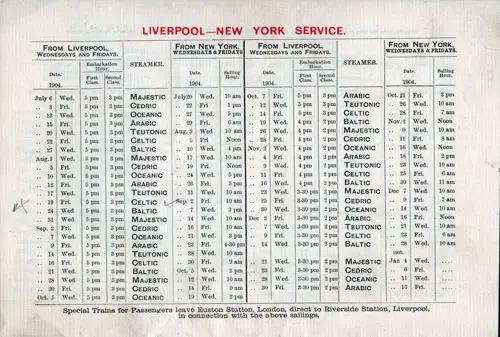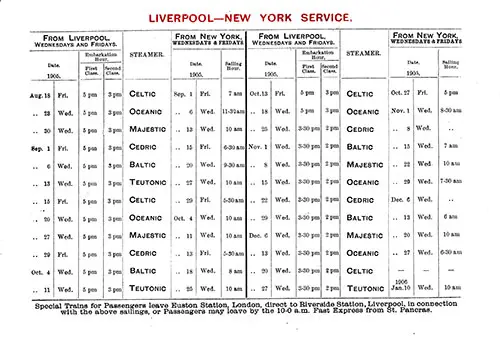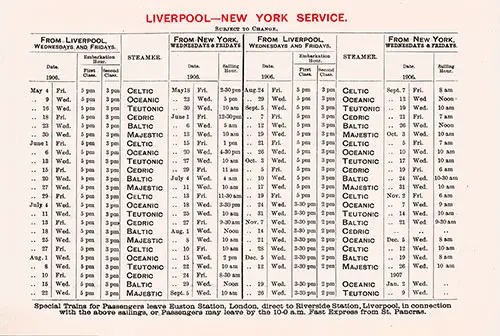RMS Baltic Archival Collection
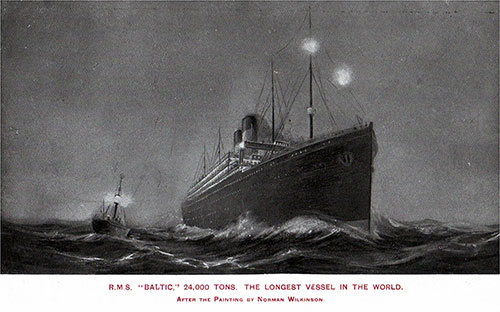
RMS Baltic, 24,000 Tons -- The Longest Vessel in the World. From the Painting by Norman Wilkinson. White Star Line Services Brochure, 1907. | GGA Image ID # 1449ef3e68
Baltic (1904) White Star Line
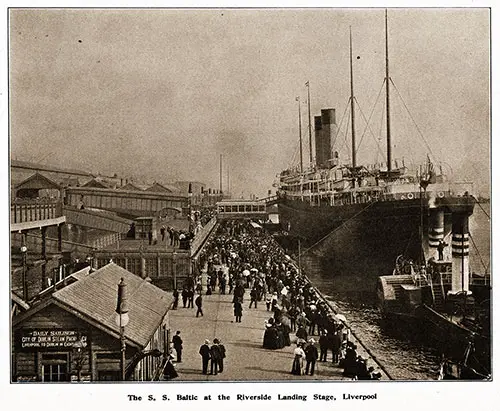
The SS Baltic (1904) at the Riverside Landing State, Liverpool. Steamers of the White Star Line, 1909. From the Chris Crofts Collection. | GGA Image ID # 211087e98a
Built by Harland & Wolff, Ltd., Belfast, Ireland. Tonnage: 23,884. Dimensions: 709' x 75' (726' o.l.). Propulsion: Twin-screw, 17 knots. Quadruple expansion engines. Masts and Funnels: Four masts and two funnels. Additional Features: Had a displacement of 40,000 tons. Largest liner built to date. Cost about $4,000,000. Launched: November 21, 1903. Maiden voyage: Liverpool-New York, June 29, 1904. Fate: Broken up by Japanese shipbreakers in 1933. Running mates: Adriatic, Cedric and Celtic. Note: These wonderful liners were known as "The Big Four."
SS Baltic Content Links
- Baltic (1904) White Star Line Ship's History (Brief)
- Passenger Lists
- Brochures
- Route Maps, Track Charts, Abstract of Logs
- Sailing Schedules
- Guides
- Title Pages
- Senior Officers and Staff
- Landing Instructions
- Photographs
- Books Referencing the RMS Baltic
- Advertisements
- Article: The New White Star Liner Baltic - 1904
Return to Content Links
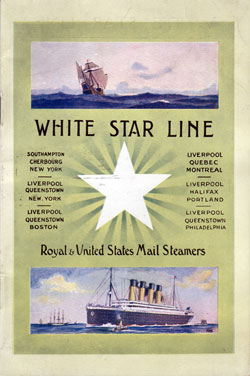
RMS Baltic Passenger Lists 1917-1931
All Digitized Lists of Passengers for the RMS Baltic Available at the GG Archives. Listing Includes Date Voyage Began, Steamship Line, Vessel, Passenger Class and Route.
Routes: Liverpool to New York; Liverpool to New York via Queenstown (Cobh); and Liverpool to Boston and New York via Queenstown (Cobh).
Return to Content Links
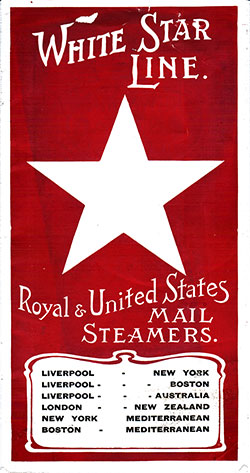
1907 - White Star Line Fleet, History, and Services
Excellent brochure from the White Star Line covering all three classes of services at the height of the transatlantic immigrant trade. Profusely illustrated with many photographs of the ships and accommodations. Featured Ships: Arabic, Athenic, Baltic, Canopic, Cedric, Celtic, Corinthic, Cretic, Cymric, Ionic, Majestic, Oceanic, Republic, Romanic, Runic, and Teutonic.
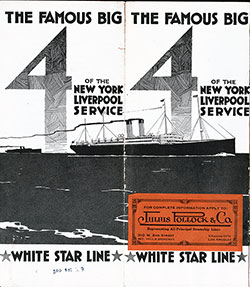
1909-04-16 The Famous Big 4 - New York-Liverpool Service
This 8-Page White Star Line brochure on the Famous Big 4 of the New York Liverpool Service - The Adriatic, Baltic, Cedric, and Celtic, is packed with incredible photographs (Interior and exterior) some with actual passengers. Includes information on the ships and their accommodations.

The Steamers of the White Star Line - 1909
A 1909 Brochure from the White Star Line is a Pictorial Featuring the Olympic and Titanic, Adriatic, Baltic, Canopic, Celtic, Laurentic and Megantic, Majestic and Teutonic, Romanic, Oceanic, Zeeland, and more.

1930 - White Star Line To Boston and New York in Third Class
Translated from a 1930 Dutch brochure on third-class accommodations on the "Big Four" - the Britannic, Baltic, Cedric, and Adriatic, with many interior photographs to document this class of travel in 1930.
Return to Content Links
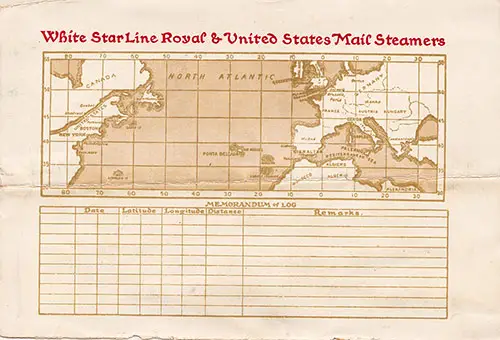
Route Map and Memorandum of Log (Unused) from the Back Cover of an RMS Baltic First Class Passenger List, 22 December 1917. | GGA Image ID # 2085da628c
Route Map and Memorandum of Log from the Back Cover of an RMS Baltic First Class Passenger List, 10 September 1921. | GGA Image ID # 2085ea02fd. Click to View Larger Image

Track Chart and Memorandum of Log (Unused). RMS Baltic Second Class Passenger List, 1 April 1922. | GGA Image ID # 208604623f
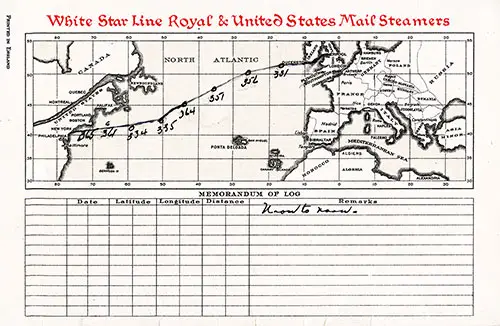
Back Cover: Track Chart and Memorandum of Log, RMS Baltic Cabin Class Passenger List, 3 March 1928. | GGA Image ID # 20c2c11ae8
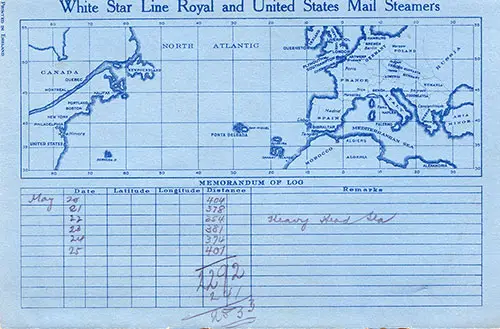
Track Chart (Unused) and Memorandum of Log from an RMS Baltic Tourist Passenger List, 18 May 1929. | GGA Image ID # 20865449e0
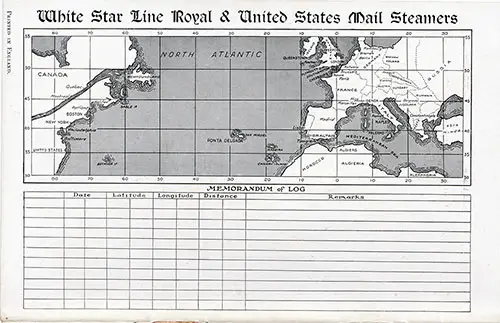
Track Chart and Memorandum of Log (Unused) from an RMS Baltic Cabin Passenger List, 13 July 1929. | GGA Image ID # 20877b26d4
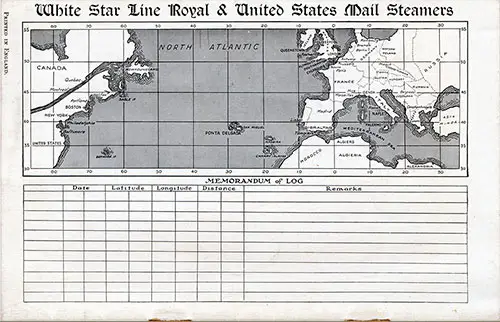
Track Chart and Memorandum of Log (Unused) from an RMS Baltic Cabin Passenger List, 14 June 1930. | GGA Image ID #
Return to Content Links
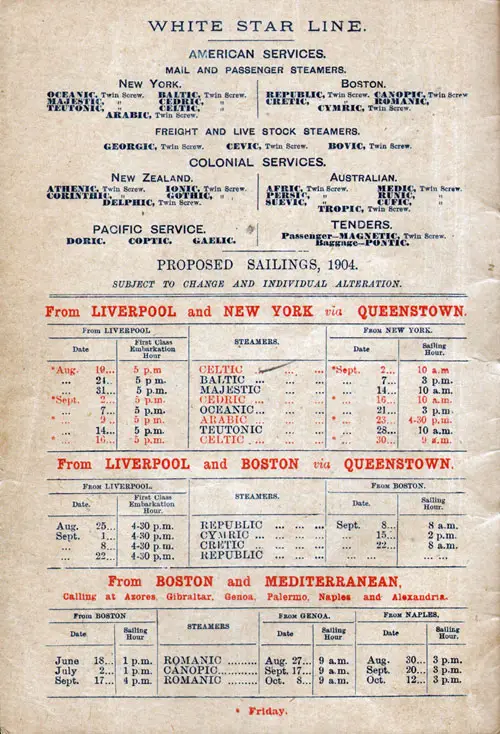
Sailing Schedule, Liverpool-Queenstown (Cobh)-New York, Liverpool-Queenstown (Cobh)-Boston, and Boston-Mediterranean Service, from 18 June 1904 to 8 October 1904. Ships Included the Arabic, Baltic, Canopic, Cedric, Celtic, Cretic, Cymric, Majestic, Oceanic, Republic, Romanic, and Teutonic. RMS Celtic Passenger List, 19 August 1904. | GGA Image ID # 1e4efde338
Sailing Schedule, Liverpool-New York Service, from 6 July 1904 to 13 January 1905. Ships Included the Arabic, Baltic, Cedric, Celtic, Majestic, Oceanic, and Teutonic. RMS Celtic Passenger List, 19 August 1904. | GGA Image ID # 1e4e8ea9b7. Click to View Larger Image.
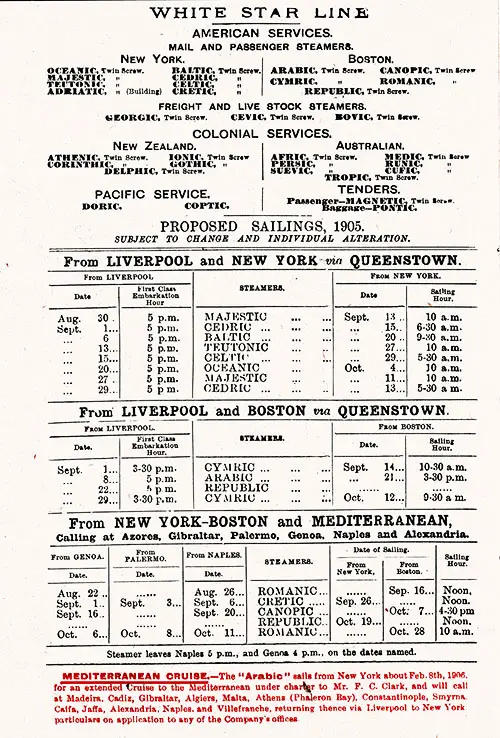
White Star Line American and Colonial Services. Proposed Sailings from 22 August 1905 to 28 October 1905. Ships Include the Arabic, Baltic, Canopic, Cedric, Celtic, Cretic, Cymric, Majestic, Oceanic, Republic, Romanic, and Teutonic. MEDITERRANEAN CRUISE—The "Arabic" sails from New York on Feb. 8th, 1906, for an extended Cruise to the Mediterranean under charter to Mr. F. C. Clark and will call at Madeira, Cadiz, Gibraltar, Algiers, Malta, Athens (Phaleron Bay), Constantinople, Smyrna. Haifa, Jaffa, Alexandria, Naples, and Villefranche, returning thence via Liverpool to New York, particulars on application to any of the Company's offices. RMS Majestic Passenger List, 30 August 1905. | GGA Image ID # 1dd41e606f
White Star Line Liverpool-New York Service from 18 August 1905 to 10 January 1906. Ships Include the Baltic, Cedric, Celtic, Majestic, and Teutonic. Special Trains for Passengers leave Easton Station. London, direct to Riverside Station, Liverpool, in connection with the above sailings, or Passengers may leave by the 10:00 a.m. Fast Express from St. Paneras. RMS Majestic Passenger List, 30 August 1905. | GGA Image ID # 1dd49614e0. Click for Larger Image.
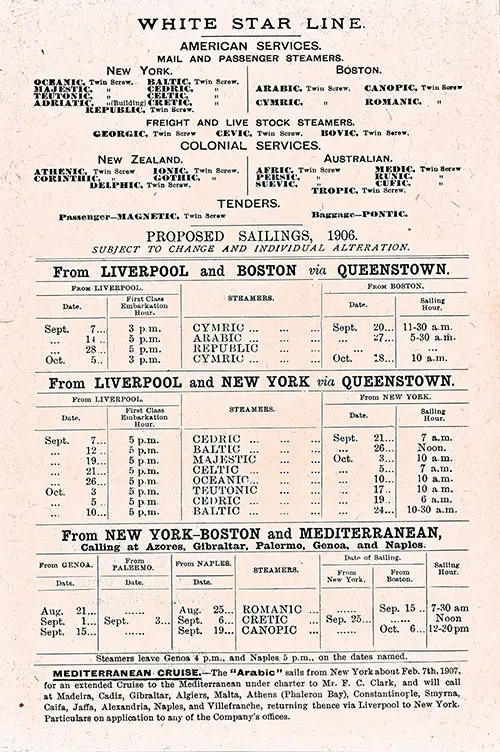
American and Colonial Services, Sailing Schedule, Liverpool-Queenstown (Cobh)-Boston, Liverpool-Queenstown (Cobh)-New York, and New York-Boston-Mediterranean, from 21 August 1906 to 28 October 1906. Ships Included the Arabic, Baltic, Canopic, Cedric, Celtic, Cretic, Cymric, Majestic, Oceanic, Republic, Romanic, and Teutonic. MEDITERRANEAN CRUISE,—The "Arabic" sails from New York about February 7th, 1907, for an extended Cruise to the Mediterranean under charter to Mr. F. C. Clark, and will call at Madeira, Cadiz, Gibraltar, Algiers, Malta, Athens (Phaleron Bay), Constantinople, Smyrna, Caifa, Jaffa, Alexandria, Naples, and Villefranche, returning thence via Liverpool to New York. RMS Cymric Passenger List, 7 September 1906. | GGA Image ID # 1e550c39be
Sailing Schedule, Liverpool-New York Service, from 4 May 1906 to 9 January 1907. Ships Included the Baltic, Cedric, Celtic, Majestic, Oceanic, and Teutonic. RMS Cymric Passenger List, 7 September 1906. | GGA Image ID # 1e55bda7dd. Click to View Larger Image.
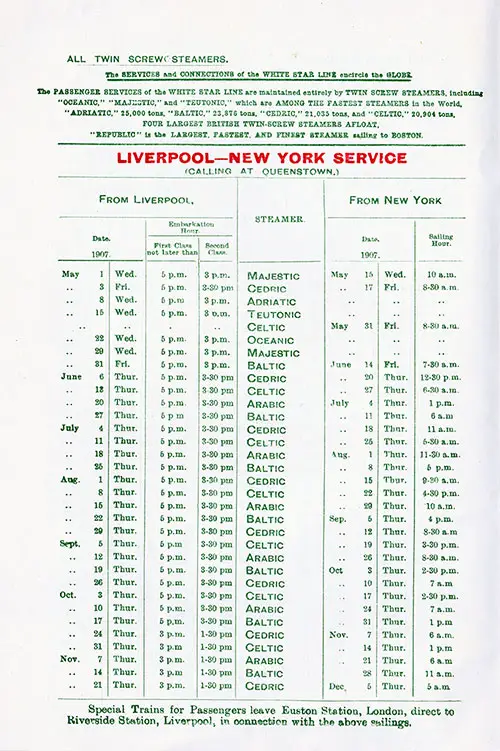
Sailing Schedule, Liverpool-New York Service, from 1 May 1907 to 6 December 1907. Ships Included the Adriatic, Arabic, Baltic, Cedric, Celtic, Majestic, Oceanic, and Teutonic. RMS Republic Passenger List, 14 August 1907. | GGA Image ID # 1e58351d4c
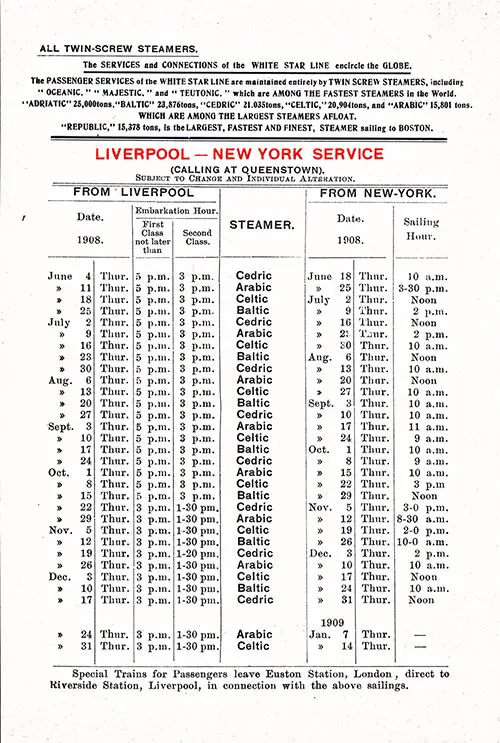
Sailing Schedule, Liverpool-Queenstown (Cobh)-New York, from 4 June 1908 to 14 January 1909. Ships Included the Arabic, Baltic, Cedric, and Celtic. SS Romanic Passenger List, 4 October 1908. | GGA Image ID # 211425365f
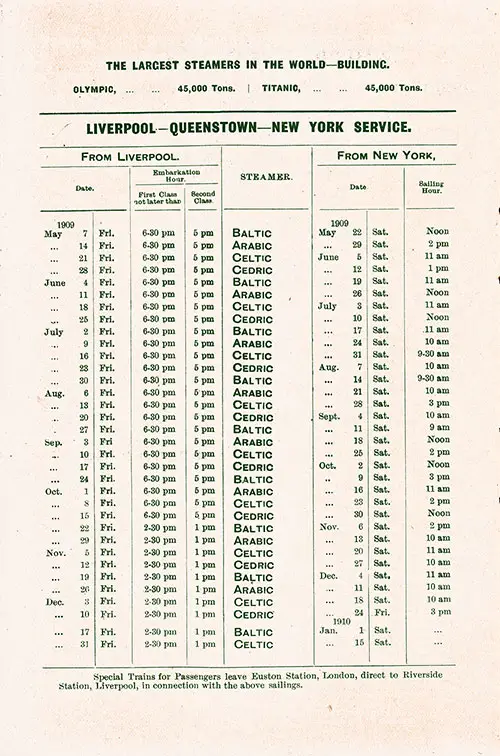
Sailing Schedule, Liverpool-Queenstown (Cobh)-New York Service, from 7 May 1909 to 15 January 1910. Ships Included the Arabic, Baltic, Cedric, and Celtic. RMS Arabic Passenger List, 11 June 1909. | GGA Image ID # 1e4b0b0004
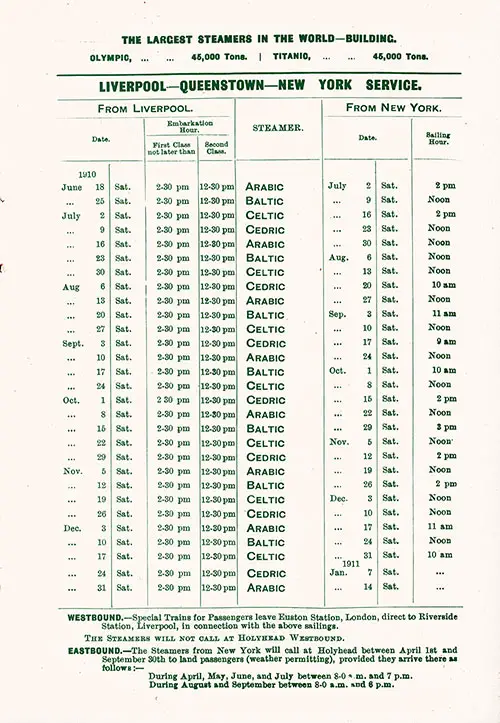
Sailing Schedule, Liverpool-Queenstown (Cobh)-New York Service, from 18 June 1910 to 14 January 1911. Ships Included the Arabic, Baltic, Cedric, and Celtic. RMS Cymric Passenger List, 26 July 1910. | GGA Image ID # 1e5638c0c4
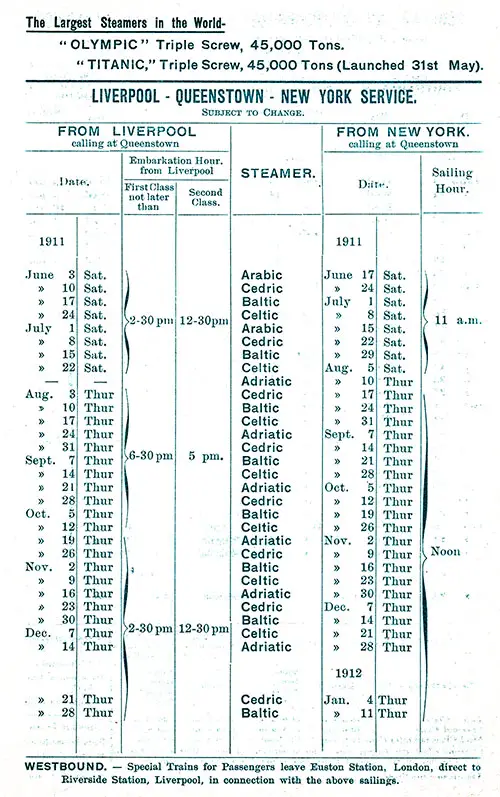
Sailing Schedule, Liverpool-Queenstown (Cobh)-New York, from 3 June 1911 to 11 January 1912. Ships Included the Adriatic, Arabic, Baltic, Cedric, and Celtic. SS Canopic First Class Passenger List, 23 July 1911. | GGA Image ID # 211fbbe1b8
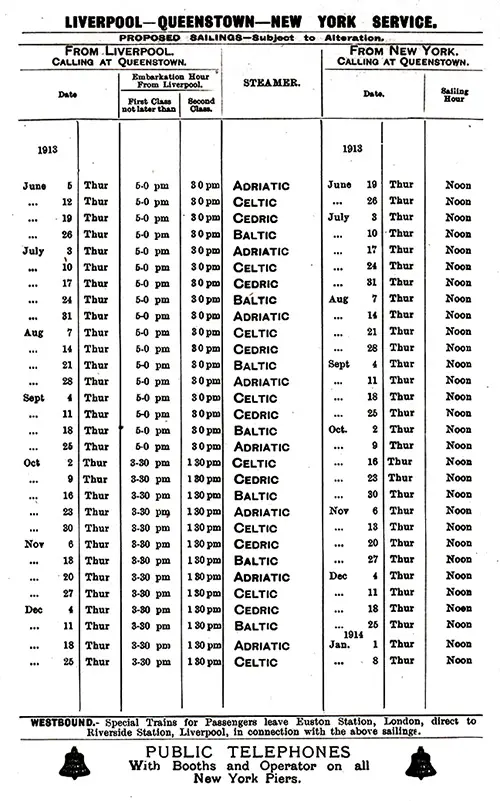
Sailing Schedule, Liverpool-Queenstown (Cobh)-New York Service, from 5 June 1913 to 8 January 1914. Ships Included the Adriatic, Baltic, Cedric, and Celtic. RMS Laurentic Passenger List, 24 June 1913. | GGA Image ID # 2084e6c859
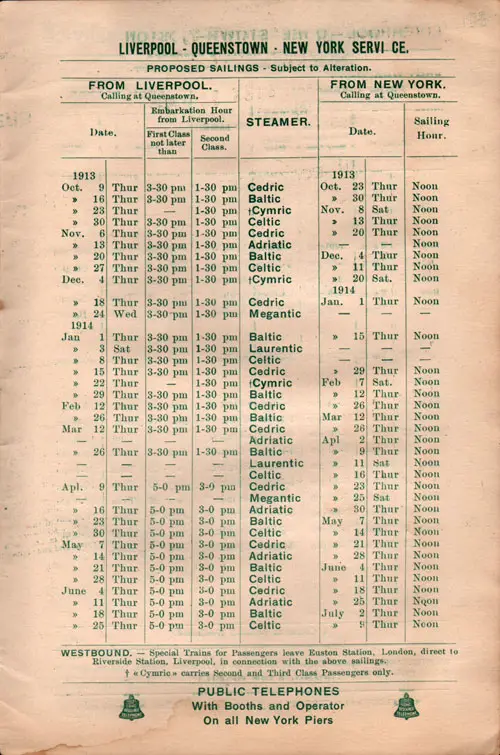
Sailing Schedule, Liverpool-Queenstown (Cobh)-New York Service, from 9 October 1913 to 9 July 1914. Ships Included the Adriatic, Baltic, Cedric, Celtic, Cymric, Laurentic, and Megantic. SS Cretic Passenger List, 22 November 1913. | GGA Image ID # 1e57d1734e
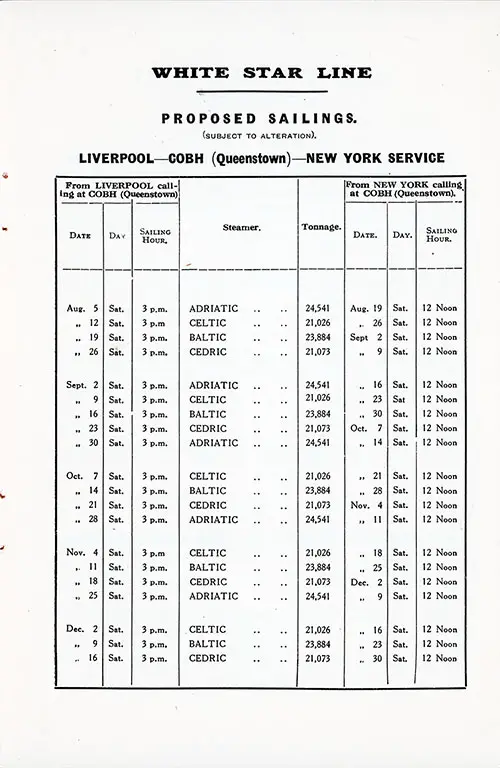
White Star Line Proposed Sailings, Liverpool-Cobh (Queenstown)-New York Service from 5 August 1922 to 30 December 1922. Ships Include the Adriatic, Baltic, Cedric, and Celtic. RMS Majestic Passenger List, 6 September 1922. | GGA Image ID # 1dd4bae80b
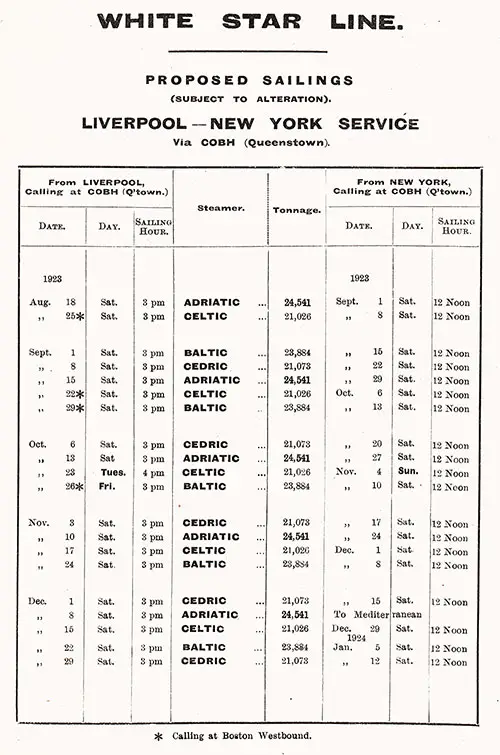
Sailing Schedule, Liverpool-Cobh (Queenstown)-New York, from 18 August 1923 to 12 January 1924. Ships Included the Adriatic, Baltic, Cedric, and Celtic. RMS Homeric Passenger List, 5 September 1923. | GGA Image ID # 1f0af1f041
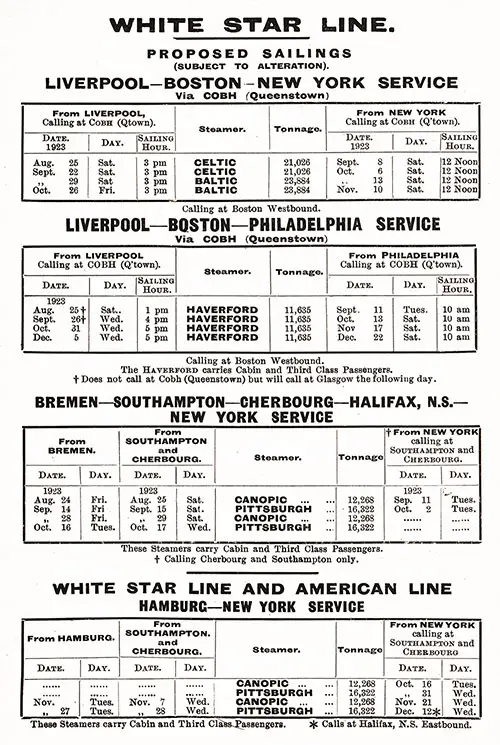
Sailing Schedule, Liverpool-Boston-New York, Liverpool-Boston-Philadelphia, Bremen-Southampton-Cherbourg-Halifax-New York, Hamburg-New York, from 24 August 1923 to 22 December 1923. Ships Included the Baltic, Canopic, Celtic, Haverford, and Pittsburgh. RMS Homeric Passenger List, 5 September 1923. | GGA Image ID # 1f0b4ef849
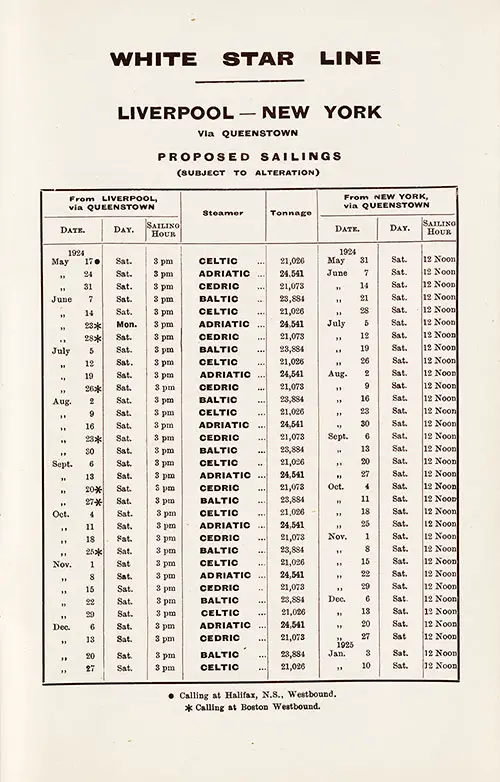
Sailing Schedule, Liverpool-Queenstown (Cobh)-New York, from 17 May 1924 to 10 January 1925. Ships Included the Adriatic, Baltic, Cedric, and Celtic. White Star Line RMS Olympic First Class Passenger List - 4 June 1924. | GGA Image ID # 207359171a
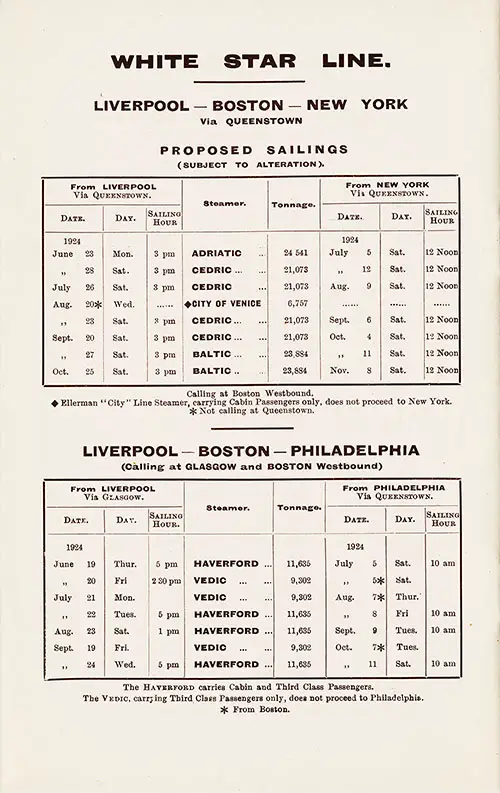
Sailing Schedule, Liverpool-Queenstown (Cobh)-Boston-New York, and Liverpool-Boston-Philadelphia, from 23 June 1924 to 8 November 1924. Ships Included the Adriatic, Baltic, Cedric, City of Venice, Haverford, and Vedic. White Star Line RMS Olympic First Class Passenger List - 4 June 1924. | GGA Image ID # 20735c2984
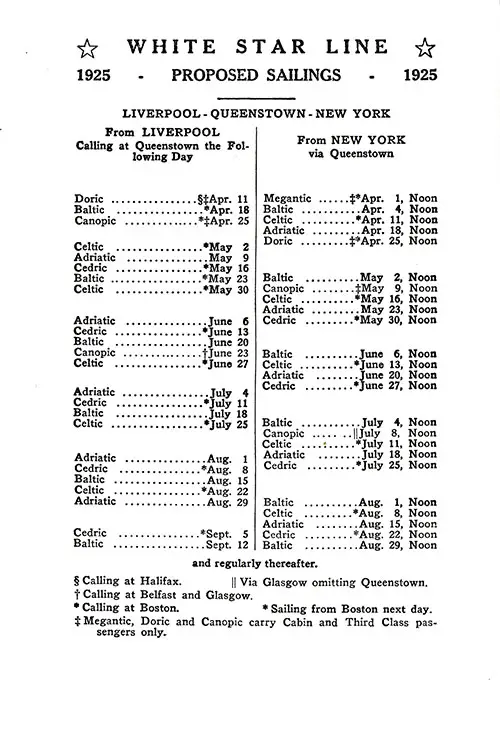
WSL Sailing Schedule, Liverpool-Queenstown (Cobh) New York and New York-Queenstown (Cobh)-Liverpool, from 1 April 1925 to 12 September 1925. Ships Included the Adriatic, Baltic, Canopic, Cedric, Celtic, Doric, and Megantic. SS Homeric Second Class Passenger List, 4 April 1925. | GGA Image ID # 20b6fe0f58
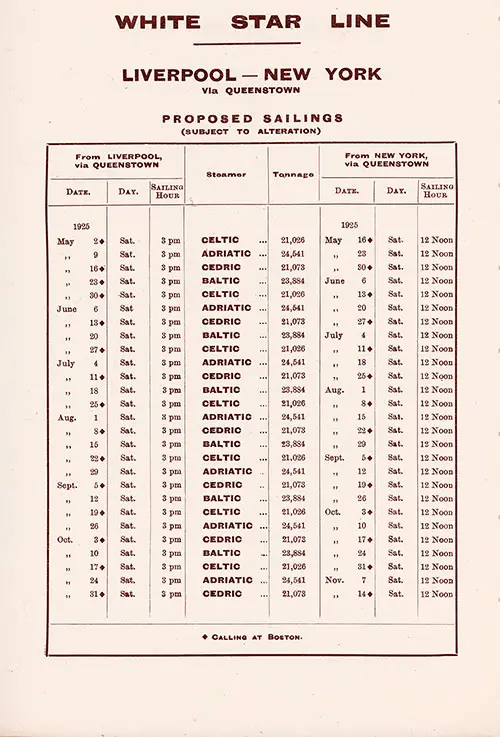
Sailing Schedule, White Star Line, Liverpool-New York via Queenstown (Cobh), from 2 May 1925 to 14 November 1925. Ships Included the Adriatic, Baltic, Cedric, and Celtic. RMS Celtic Passenger List, 30 May 1925. | GGA Image ID # 1e52582b7b
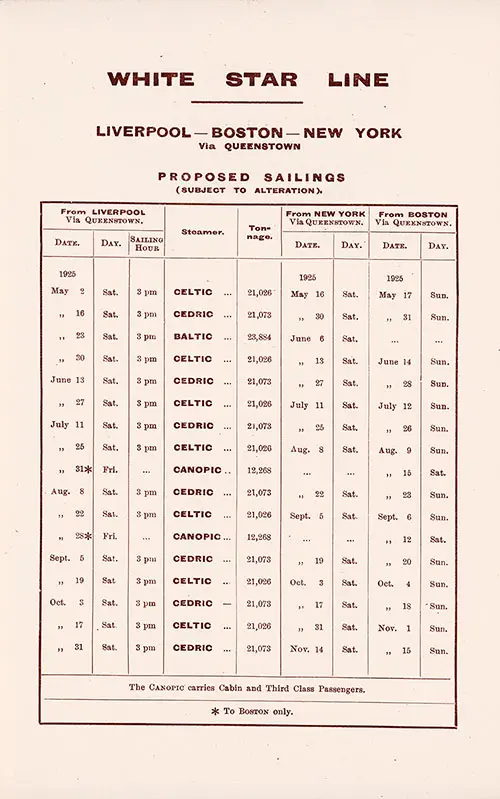
Sailing Schedule, White Star Line, Liverpool-Boston-New York via Queenstown (Cobh), from 2 May 1925 to 15 November 1925. Ships Included the Baltic, Canopic, Cedric, and Celtic. RMS Celtic Passenger List, 30 May 1925. | GGA Image ID # 1e5290262e
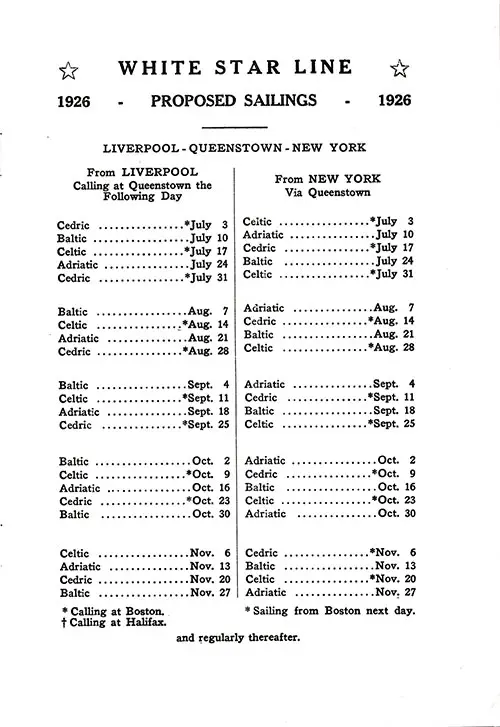
Proposed Sailings, White Star Line, Liverpool-Queenstown (Cobh)-New York, from 3 July 1926 to 27 November 1926. Ships Included the Adriatic, Baltic, Cedric, and Celtic. RMS Belgenland Passenger List, 26 June 1926. | GGA Image ID # 1df2408a0a
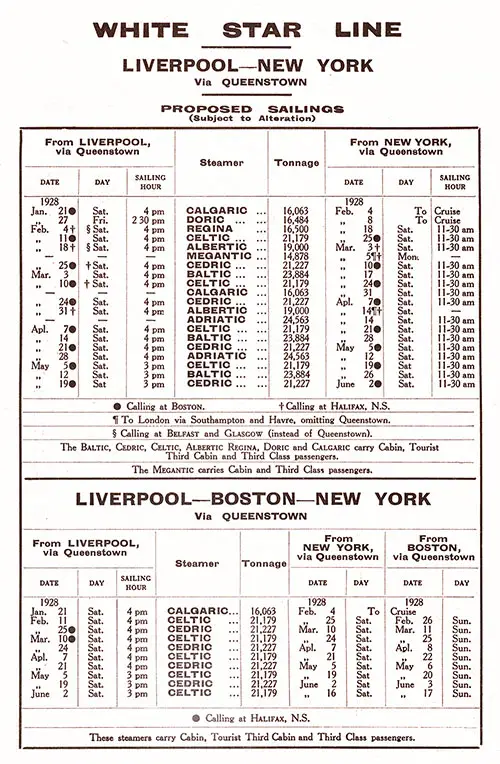
Sailing Schedule, Liverpool-Queenstown (Cobh)-New York and Liverpool-Queenstown (Cobh)-Boston-New York, from 21 January 1928 to 17 June 1928. Ships Included the Adriatic, Albertic, Baltic, Calgaric, Cedric, Celtic, Doric, Megantic, and Reginia. The Baltic, Cedric, Celtic, Albertic Regina, Doric, and Calgaric carry Cabin, Tourist Third Cabin, and Third Class passengers. The Megantic carries Cabin and Third Class passengers. RMS Baltic Cabin Class Passenger List, 3 March 1928. | GGA Image ID # 20c1e3cd08
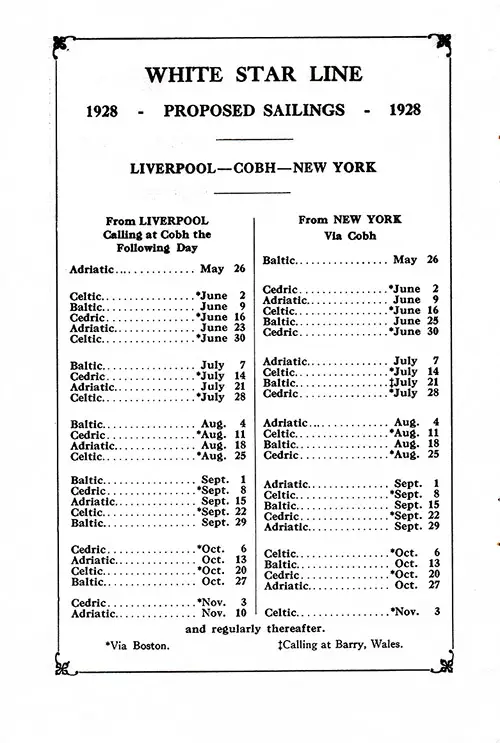
Sailing Schedule, Liverpool-Cobh-New York, from 26 May 1928 to 10 November 1928. Ships Included the Adriatic, Baltic, Cedric, and Celtic. SS Doric Passenger List, 19 May 1928. | GGA Image ID # 206d07db97
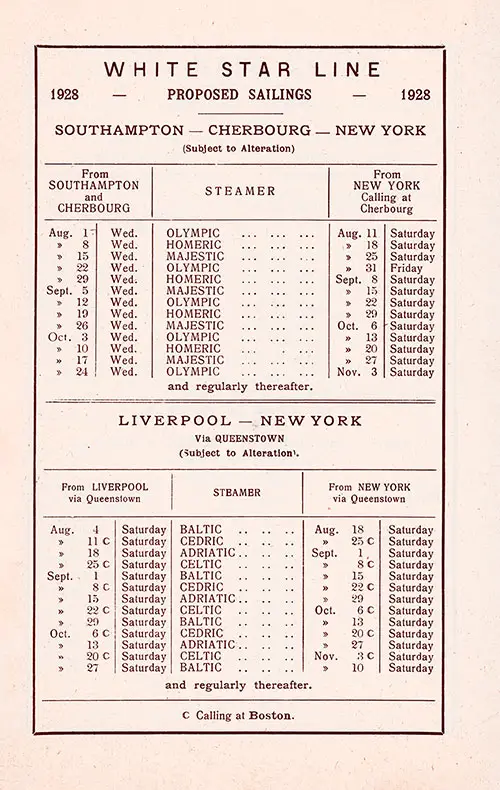
Sailing Schedule, Southampton-Cherbourg-New York and Liverpool-New York, from 1 August 1928 to 10 November 1928. Ships Included the Adriatic, Baltic, Cedric, Celtic, Homeric, Majestic, and Olympic. SS Lapland Passenger List, 31 August 1928. | GGA Image ID # 1ebe71055b
Return to Content Links
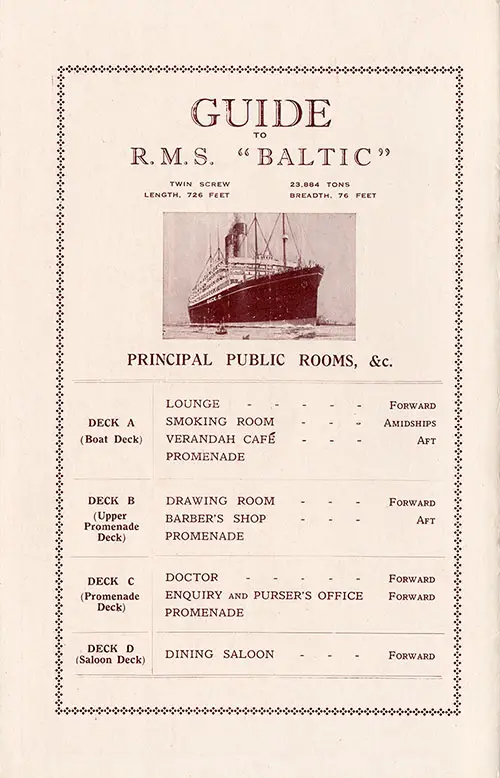
White Star Line SS Baltic Guide to Principal Public Rooms. | GGA Image ID # 1daf7ab3ff
Guide to RMS Baltic
Twin Screw, 23,884 Tons, Length: 726 Feet, Breadth: 76 Feet
Principal Public Rooms
| DECK A (Boat Deck) | LOUNGE | Forward |
|---|---|---|
| SMOKING ROOM | Amidships | |
| VERANDAH CAFÉ | Aft | |
| PROMENADE | ||
| DECK B (Upper Promenade Deck) | DRAWING ROOM | Forward |
| BARBER SHOP | Aft | |
| PROMENADE | ||
| DECK C (Promenade Deck) | DOCTOR | Forward |
| ENQUIRY and PURSER'S OFFICE | Forward | |
| PROMENADE | ||
| DECK D (Saloon Deck) | DINING SALOON | Forward |
Return to Content Links
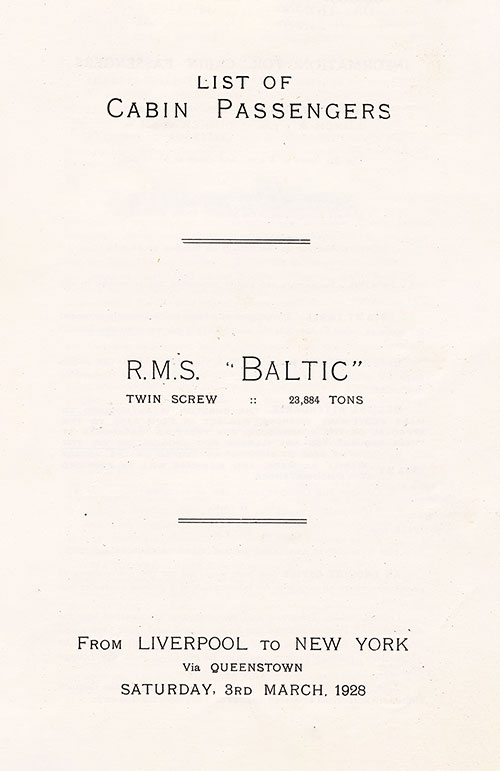
Title Page, RMS Baltic Cabin Class Passenger List, 3 March 1928. | GGA Image ID # 20c03f5489

Title Page, RMS Baltic Cabin Passenger List, 13 July 1929. | GGA Image ID # 2086575c80

Title Page, RMS Baltic Cabin Passenger List, 14 June 1930. | GGA Image ID # 208790bbe7
Return to Content Links

List of Senior Officers and Staff, RMS Baltic Cabin Class Passenger List, 3 March 1928. | GGA Image ID # 20c1141585
Return to Content Links
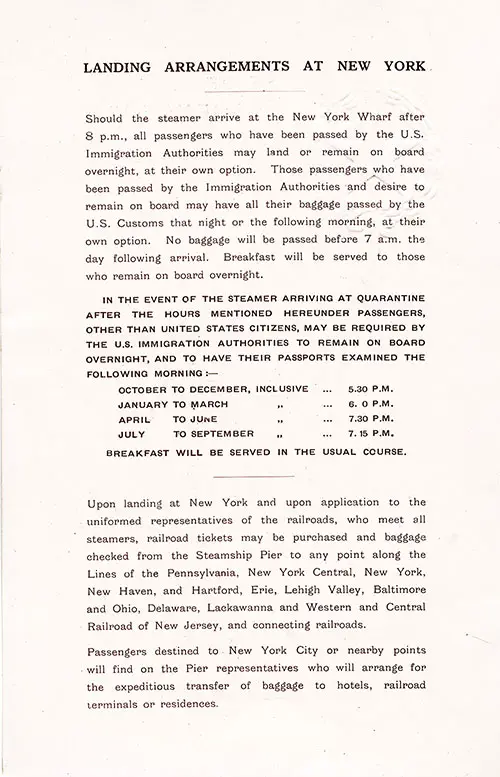
Landing Arrangements in New York, 1928. RMS Baltic Cabin Class Passenger List, 3 March 1928. | GGA Image ID # 20c0119b81
Return to Content Links
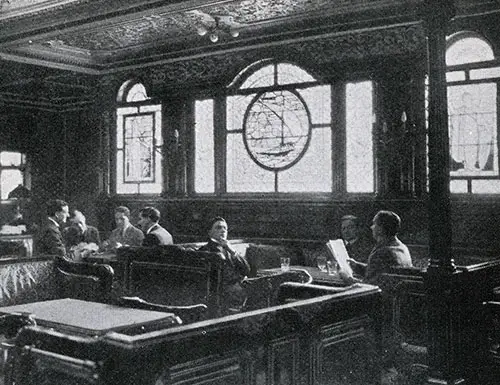
First Class Smoking Room on the Baltic. White Star Line Famous Big 4, 16 April 1909. | GGA Image ID # 11ab0cf97c
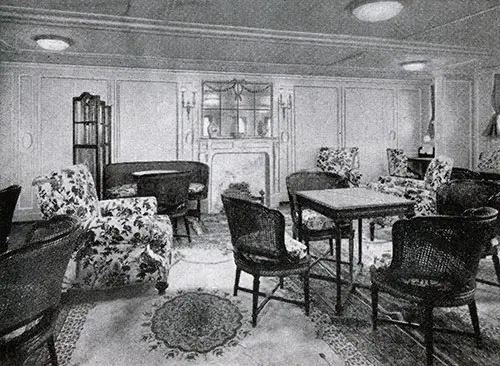
First Class Drawing Room on the Baltic. Harmony and Restful Seclusion Make This a Delightful Apartment in Which to Pass Quiet Hours with a Book or Friend. White Star Line Famous Big 4, 16 April 1909. | GGA Image ID # 11ab460ebd
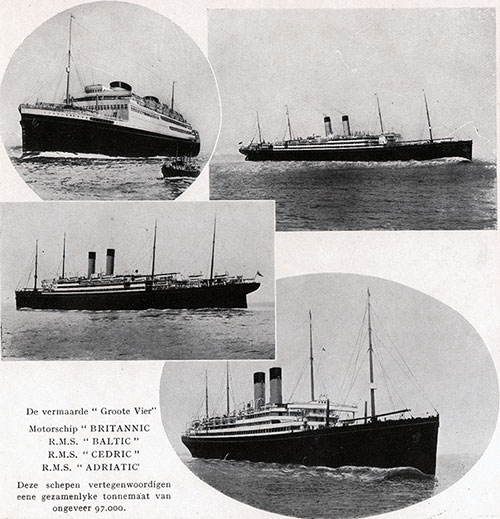
The Renowned "Big Four": MV Britannic, RMS Baltic, RMS Cedric, and RMS Adriatic -- These Vessels Represent a Combined Tonnage of Approximately 97,000. White Star Line To Boston and New York in the Third Class - 1930 Brochure. | GGA Image ID # 11eb3e77b0
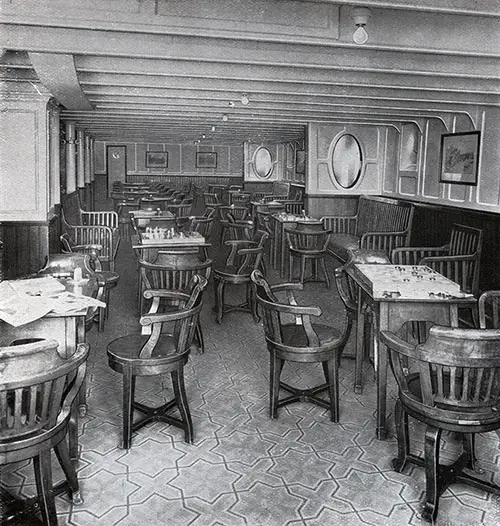
Third Class Smoking Room on the RMS Baltic. White Star Line To Boston and New York in the Third Class - 1930 Brochure. | GGA Image ID # 11ec650317
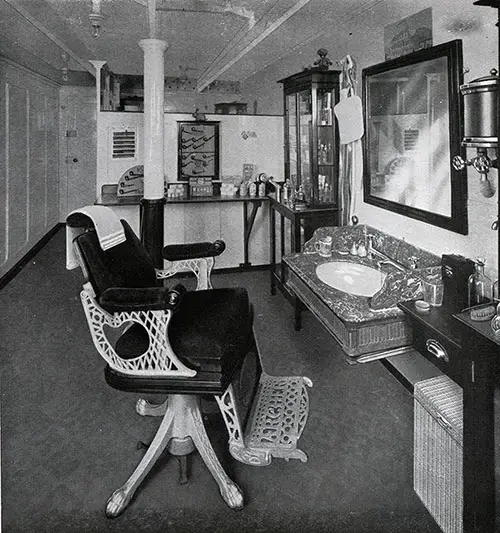
Third Class Barber Shop on the RMS Baltic. White Star Line To Boston and New York in the Third Class - 1930 Brochure. | GGA Image ID # 11ec79f07f
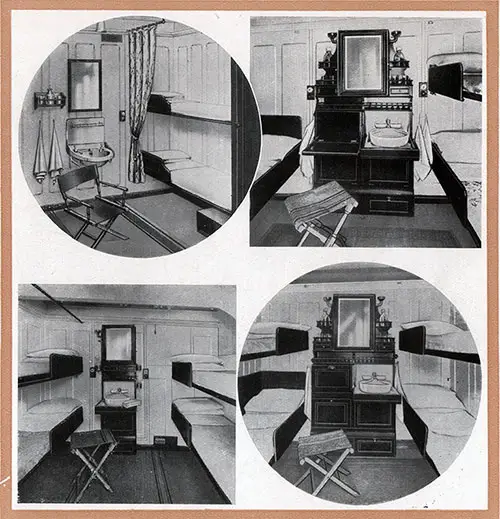
Third Class Staterooms (Clockwise from Top Left): MV Britannic Room with 2 Beds; RMS Baltic Room with 3 Beds; RMS Cedric Room with 4 Beds; And RMS Adriatic Room with 4 Beds. White Star Line To Boston and New York in the Third Class - 1930 Brochure. | GGA Image ID # 11ecd8e57d
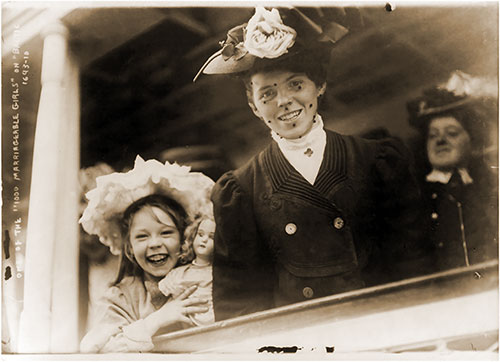
Ellis Island, NY: One of the 1,000 Marriageable Girls on the RMS Baltic of the White Star Line, 1907. Photo by George G. Bain. Bains News Service. Library of Congress LCCN 2001704430. | GGA Image ID # 20852eab8e
According to the New York Magazine, during the peak years, 20 percent of the new immigrants were detained because they were sick or "politically undesirable" or liable to become public charges. Single women who weren't met by a relative or a member of an immigration-aid society were also held back for fear they would be exploited or lured into prostitution. Many women—"picture brides"—came to America to be married. In September 1907, the RMS Baltic carried at least 1,000 marriageable girls. Understandably, many weddings were performed right on the island. (New York Magazine, 27 August 1990, p. 30)
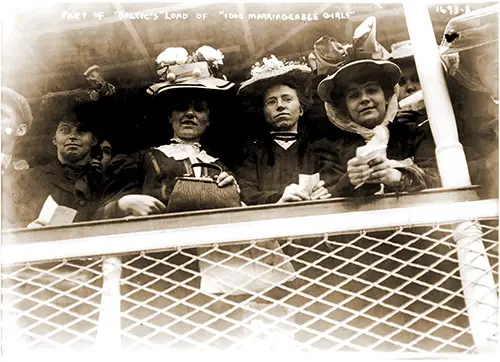
Ellis Island: Portion of the 1,000 Marriageable Women from the RMS Baltic, 27 September 1907. Photo by Bain News Service. Library of Congress LCCN 2001704440. | GGA Image ID # 2085685af3
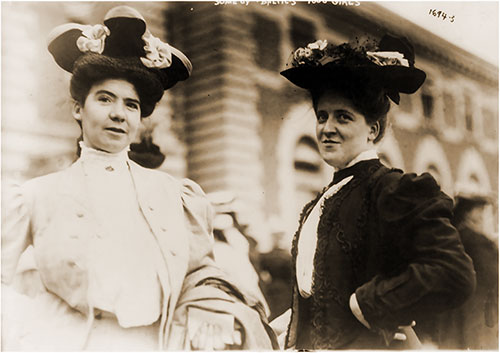
Two More Women of the RMS Baltic's 1,000 Marriageable Girls, 27 September 1907. Photo by Bain News Service. Library of Congress LCCN 2001704436. | GGA Image ID # 2085723a56
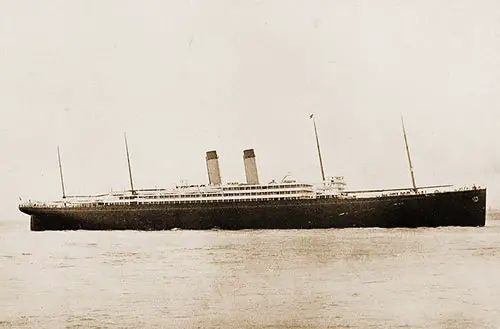
Plate XL: White Star Liner RMS Baltic (1904). Every Boy's Book, 1911. | GGA Image ID # 2085c8455f
Return to Content Links

A Century of Sea Travel: Personal Accounts from the Steamship Era
This book is a voyage through the life of the passenger steamship, a voyage described by travellers who sailed on these vessels, and it carries within it their thoughts and experiences, mirrored here in words and pictures.

Doomed Ships: Great Ocean Liner Disasters
Naval historian William H. Miller, Jr. recounts the dramatic stories behind various ill-fated passenger ships. He takes readers beyond the newspaper headlines and formal inquiries, offering firsthand accounts of heroic rescues, daring escapes, and tragic losses.
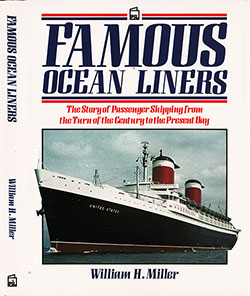
Here is the story of twentieth-century passenger shipping, from the first of the superliners — the German Kaiser Wilhelm der Grosse — to Cunard's Queen Elizabeth and Queen Mary, right up to Queen Elizabeth 2.

The First Great Ocean Liners in Photographs - 1983
Sumptuous volume recalls the glorious early years of elegant transatlantic travel. Over 190 historic photographs depict exterior and interior views of 101 great ocean liners, including the Virginian, Imperator, Vaterland, Bismarck, Lusitania, Mauretania, Balmoral Castle, Titanic, Olympic, Aquitania and dozens more. Full captions.

The Great Liners: The Seafarers, Volume 4
A history of the world's famous luxury liners provides portraits of the ships. It examines such great disasters as the sinking of the Titanic. This edition explores the grand hotels that traversed the Atlantic between 1840 and 1930.

Great Passenger Ships of the World 1858-1912
This initial volume deals with Ships from 1858-1912, from the first passenger ship of over 10,000 GRT to be placed in service (the Great Eastern) to those unforgettable sister ships, the Olympic and Titanic — the first of more than 40,000 GRT.

Great Passenger Ships of the World 1951-1976
This volume, covering the years 1951-1976, embraces a period of dramatic change in ocean travel, the growth in airline travel causing a sharp decline in passenger liner building and existing liners being increasingly used in the cruising role.

Harland & Wolff: Designs from the Shipbuilding Empire
The book is an introductory overview of the company, its shipyards, and its works is followed by 44 detailed drawings of the ships, from the earliest sailing vessels to the great liners such as the Canberra and the Southern Cross.
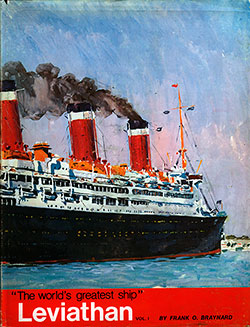
Leviathan: "The World's Greatest Ship" Volume 1
The first volume takes us from the construction of the VATERLAND to the end of World War One when the VATERLAND, now the U.S.S Leviathan, was used as a troop transport and packed with fabulous photographs and reproductions of newspaper articles.

Liverpool and the Mersey, Vol. 1: Gladstone Dock and the Great Liners
More than 190 rare archive photographs and maps, many never before published, recount the story of this most famous dock and the Great passenger Ships that were once a regular sight there.

Lost Liners, Titanic to the Andrea Doria
Maps, charts, and diagrams make this handsome volume a valuable reference tool and a compelling evocation of that glorious era when floating palaces ruled the sea lanes.

Majesty at Sea: The Four Stackers
The opulent and luxurious four-funnel passenger liners, of which only fourteen have ever been built, are unsurpassed in maritime history. Built between 1897 and 1921, these great vessels vied with each other in their standards of comfort, spaciousness, and speed, and great was the rivalry between their owners.

Ocean Steamers: A History of Ocean-Going Passenger Steamships 1820-1970
A history of the steam-powered passenger ship that details its story from the SS Savannah of 1819 to the SS Hamburg of 1969. It contains historical details of all civilian vessels built in the intervening years, with numerous illustrations and previously unpublished material.
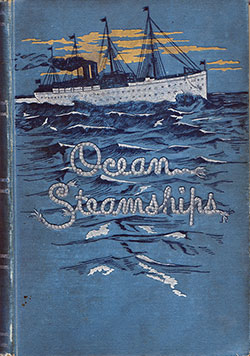
With Ninety-six Illustrations. Few books will leave the press during this holiday season that are as solid and satisfying in their matter and as sumptuous in their form as this volume—over 30 High-Quality Images. Follow the Book' Description.
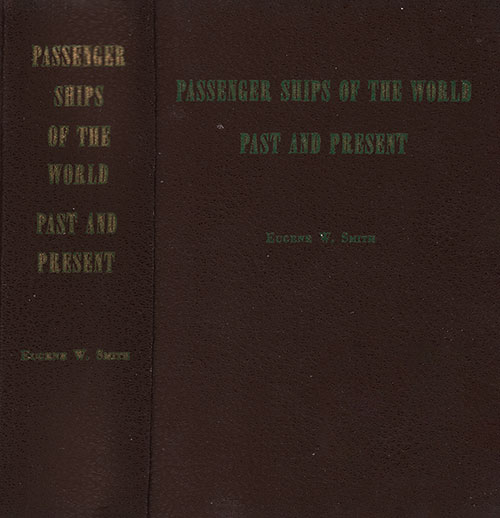
Passenger Ships of the World - 1963
🎓 “A Global Voyage Through Steamship History for Historians, Genealogists, and Maritime Enthusiasts”
Eugene W. Smith’s Passenger Ships of the World – Past and Present (1963) is a masterfully curated encyclopedic reference that charts the rise, peak, and transformation of ocean-going passenger ships through nearly two centuries. Expanding upon his earlier Trans-Atlantic and Trans-Pacific works, Smith offers a global maritime panorama that includes ships serving the Americas, Africa, Europe, Asia, Australia, and Oceania, as well as Canal routes and California-Hawaii shuttle lines.
🧭 This book is an essential resource for:
- Maritime historians seeking design evolution and fleet data
- Genealogists tracing voyages and shipping lines
- Educators and students studying transoceanic migration and tourism
- Ship modelers, naval architects, and enthusiasts interested in dimensions, tonnage, and speed

Pictorial Encyclopedia of Ocean Liners, 1860-1994
One of the most comprehensive pictorial references on ocean liners ever published, this superb chronicle by noted maritime historian William H. Miller, Jr., depicts and describes virtually every passenger ship of over 15,000 tons built between 1860 and the late 1900s.

Picture History of British Ocean Liners: 1900 to the Present
Over 200 rare black-and-white illustrations provide views of the ships at sea and in port, glimpses of lavish staterooms, lounges, dining areas, onboard photos of celebrities and royalty, and much more.

Picture History of the SS United States
A comprehensive pictorial record of the SS United States that will appeal to maritime historians, this celebration of an American champion and centerpiece of national pride will also captivate ship lovers and anyone thrilled by sea travel.

This book provides, in a narrative free from technical terms, a complete history of the development of steamships, showing the evolution of the modern ocean greyhound from the earliest experiments in marine engineering. The illustrations form a unique feature of this handsome volume.
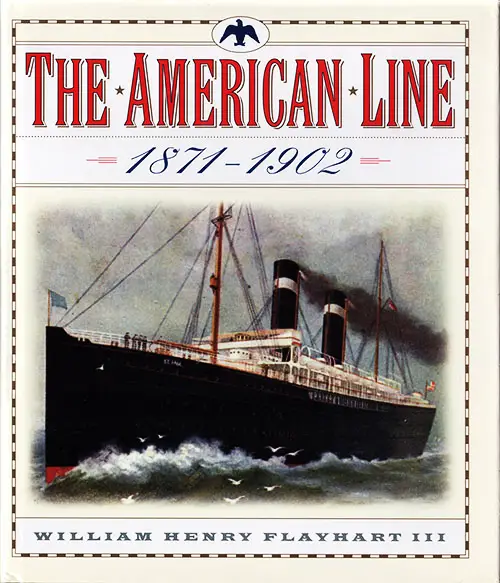
The American Line: 1871-1902 (2000)
📚 "Restoring the Stars and Stripes to the North Atlantic"
William H. Flayhart III’s The American Line: 1871–1902 is a powerful narrative chronicling one of the most ambitious yet underappreciated efforts in U.S. maritime history: the rebirth of American transatlantic shipping in the age of steam. For teachers, students, historians, genealogists, and lovers of ocean liner history, this book offers an indispensable resource on how the American Merchant Marine tried to reclaim its former glory after the Civil War devastated the industry.
The book centers around the rise of the American Line, backed by Philadelphia’s business elite and the Pennsylvania Railroad, and its close cousin, the Red Star Line, launched under a foreign flag to circumvent U.S. restrictions. Flayhart’s exhaustive research delivers a sweeping yet accessible account of how these two lines changed the face of transatlantic travel.
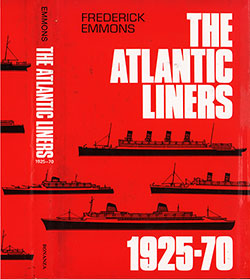
THE ATLANTIC LINERS will be cherished by all the millions of Americans who love the sea. Frederick Emmons sketches the histories of every ocean liner that sailed between the United States and Europe between 1925 and 1970.

The Wilson Line of Hull 1831-1981
The book traces the development of the Line under the Wilson family, with sections on ports of call, ships lost during both World Wars, wrecks, and ships in the news. Much of the book comprises a detailed fleet list, and the text is supported throughout by over 100 photographs and illustrations, some in color.
Return to Content Links
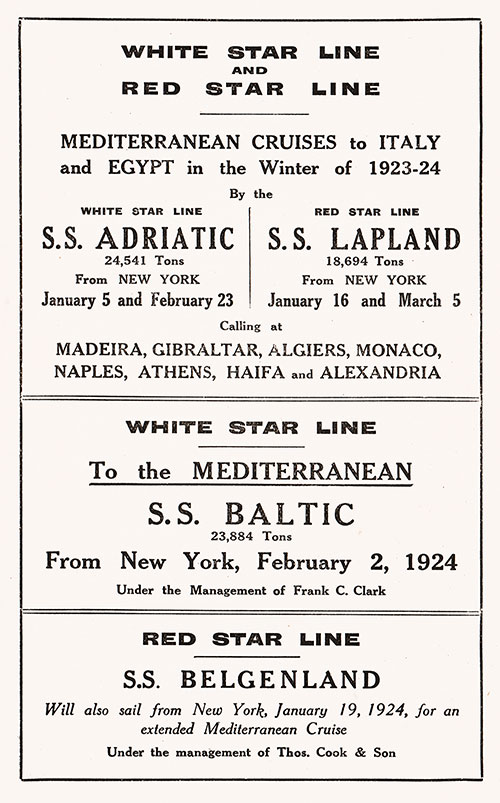
Mediterranean Cruises to Italy and Egypt in the Winter of 1923-1924 by the White Star Line SS Adriatic and Red Star Line SS Lapland. Frank C. Clark Tours to the Mediterranean on the White Star Line SS Baltic. Thomas Cook & Son Tours to the Mediterranean on the Red Star Line Belgenland. RMS Homeric Passenger List, 5 September 1923. | GGA Image ID # 1f09d5deba
Return to Content Links
By the English Correspondent of the Scientific American
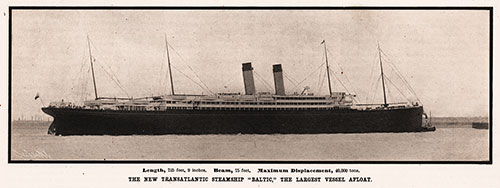
The New Transatlantic Steamship SS Baltic is the largest vessel afloat. Length: 725 Feet, 9 Inches. Beam, 75 Feet. Maximum Displacement: 40,000 Tons. Scientific American, 16 July 1904. | GGA Image ID # 20880963b6
Introduction
The success of the "Oceanic" showed that the most remunerative type of craft for transatlantic traffic is the vessel of medium speed, maintained under all varying conditions but of a tremendous tonnage.
Although speed may be an essential desideratum from one point of view, such a qualification is, in reality, only appealing to a limited quota of passengers, the bulk of travelers preferring greater comfort and steadiness of the vessel, especially in rough weather. Each of the two ships built after the "Oceanic" has marked an increase in size and tonnage upon its predecessor.
The latest liner, the "Baltic," surpasses in size anything that has thus far been attempted. However, it is not finite, for Messrs. Harland & Wolff have declared their readiness to build a vessel of 50,000 tons. The realization of such a vessel depends upon a dock's capacity to accommodate it.
RMS Baltic Specifications
The length of the "Baltic" overall is 725 feet 9 inches. This increases the size of the "Celtic" and "Cedric" by 25 feet. The beam is the same, 75 feet; the depth is 49 feet. The gross tonnage is 23,000 tons, an increase of about 3,000 tons. The cargo capacity is about 28,000 tons, and the total displacement at the load draft approximates 40,000 tons.
Although the two sister ships are practically of recent construction, so rapid is the progress of development in shipbuilding design and construction that this latest vessel contains several interesting improvements, possibly of embodiment owing to the immense size of the boat.
The same standard of luxury and comfort in the accommodation and appointments for the convenience of the passengers, so characteristic of the previous ships, is maintained, but the accommodation is more spacious. The total complement is 3,000 passengers and a crew of about 350.
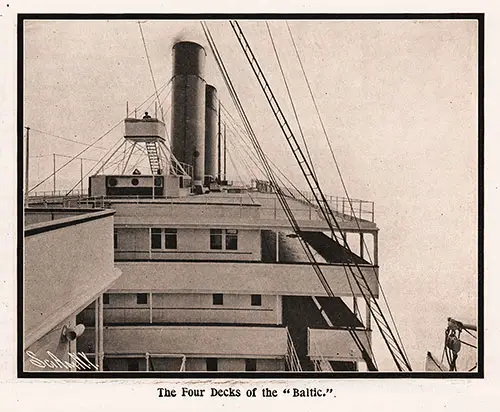
The Four Decks of the RMS Baltic. Scientific American, 16 July 1904. | GGA Image ID # 208796bfdc
First Class Accommodations
The ship's general arrangement is similar to the other two vessels of this type—a continuous shade deck running fore and aft, with three tiers of deckhouses and two promenade decks above the same. The first-class smoke room and library are on the upper promenade deck, and the two houses below contain the deck staterooms.
All the first-class accommodation is situated amidships. One of the most notable features of the "Baltic" is the grand dining saloon on the upper deck. It extends the entire width of the ship, 75 feet, is exceptionally lofty and airy, and has seating accommodation for 350 people. It has a domed skylight, and the decorations are most artistically and effectively carried out.
Immediately after the first class is the second-class accommodation, a comfortable smoking room, and a library.
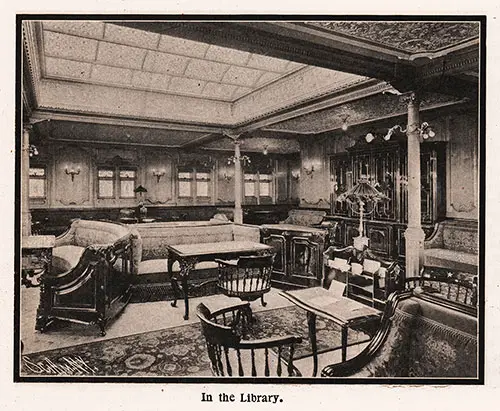
View of the First Class Library on the RMS Baltic. Scientific American, 16 July 1904. | GGA Image ID # 2087e7b342
Third Class Accommodations
The third-class passengers are provided for abaft the second-class, and to a limited extent at the fore end of the vessel. A great feature of this accommodation is the large number of staterooms, two, three, and four berths, and the spacious and comfortable dining rooms, fitted with tables and revolving chairs.
Safety Devices
The maximum safety is secured by the exceptional strength and structure of the vessel, together with the elaborate system of watertight compartments.
One essential safety device, which 'is the first instance of its application to a mercantile vessel, is the electrical indicator utilized in the British Navy to prevent collisions. This device is placed on the bridge. It indicates the exact position of any other vessel entering its magnetic zone.
A dial carries a needle on its face, similar to a compass. Directly, the other vessel enters the magnetic zone, whose radius is five miles; the needle revolves and points directly toward it, indicating its precise location. This apparatus is susceptible, and even the screw revolutions of the- approaching vessel are registered by the wave vibrations.
In this manner, the officer on the bridge can estimate the exact time he is distant from the other vessel and act accordingly to clear it. With this preventive device, another vessel can't creep up, even in foggy weather or under cover of darkness, without the officer being aware of its approach.
The electrical lead and log are other essential devices that ensure greater safety. When in operation, the ship's speed and the water's depth are indicated at intervals of ten seconds.
Galley Refrigerators
The cooking and refrigerators are also electrically operated, which provides greater cleanliness and coolness. The odors of the cooking galley are withdrawn utilizing electric fans carried through pipes and exhausted into the open air at the stern of the vessel.
The machines for the refrigerating chambers are worked upon the CO2 principle. This plant is electrically operated, thereby obtaining an appreciable economy in ice storage, as the vessel will.be able to leave the port with a smaller supply of ice than is feasible upon other vessels fitted with existing systems.
The private staterooms are equipped with electric chafing dishes, warming pans, and other utensils, which the passengers can immediately use whenever desired, an innovation which will doubtless be highly appreciated.
Propulsion and Engineering
The vessel could be faster. In the case of the "Oceanic" case, a speed of 20 knots can be maintained, but in the subsequent vessels, this was reduced to about 16.2 knots. The "Baltic" will approximate the same speed, with a great reserve of power, to maintain this rate of traveling even under adverse conditions.
The "Baltic" is fitted with Harland & Wolff's quadruple-expansion type engines, developing about 13,000 I. H. P. The engines are arranged on the balance principle, which eliminates all vibration. The twin engines and twin screws afford another element of safety to the ship and passengers, and the possibility of danger is reduced to a minimum.
Maiden Voyage of the RMS Baltic
The maiden trip to the "Baltic" was made without incident. Her journey took 7 days, 13 hours, and 37 minutes. She left Liverpool at 5 P. M. on June 29th. By S:21, she had passed Rock Light on her way to Queenstown. Her daily runs were: July 1, 312 knots; July 2, 395 knots; July 3, 403 knots; July 4, 417 knots; July 5, 387 knots; July 6, 407 knots; July 7, 414 knots.
The engines ran from seventy-eight to eighty revolutions a minute. At the same time, the forty-eight furnaces consumed only 235 tons of coal a day. The "Baltic's" best day's run was on July 4, when 417 knots were logged, and she maintained an average hourly speed of seventeen knots. Her average for the trip was 16.1 knots.
"English Correspondent," "The New White Star Line 'Baltic' -- The Largest Vessel in the World," in the Scientific American, Vol. XCI, No. 3, New York, 16 July 1904, p. 44+
Return to Content Links


